by Elisa Zied | Oct 23, 2021 | books, fiction, writer, writers, writing, young adult books
If you’re looking for an immersive, beautiful and expansive story about friendship (with romance), Laura Taylor Namey’s third novel, When We Were Them (Atheneum Books for Young Readers, November 16, 2021), more than fits the bill. Told over the course of one week and laced with rich memories and moments between three friends, the story is sure to resonate with teens and adult readers alike who have experienced or aspired to have deep, meaningful relationships.
Here’s a description of the novel from Taylor Namey’s website:
When they were fifteen, Willa, Luz, and Britton had a friendship that was everything.
When they were sixteen, they stood by one another no matter what.
When they were seventeen, they went through the worst.
And when they were eighteen, Willa ruined it all.
I had the pleasure of doing a Q & A with Taylor Namey, an author I’m also proud to call a friend since we met years ago at the SCBWI annual conference in Los Angeles. Here are the highlights from our email exchange.
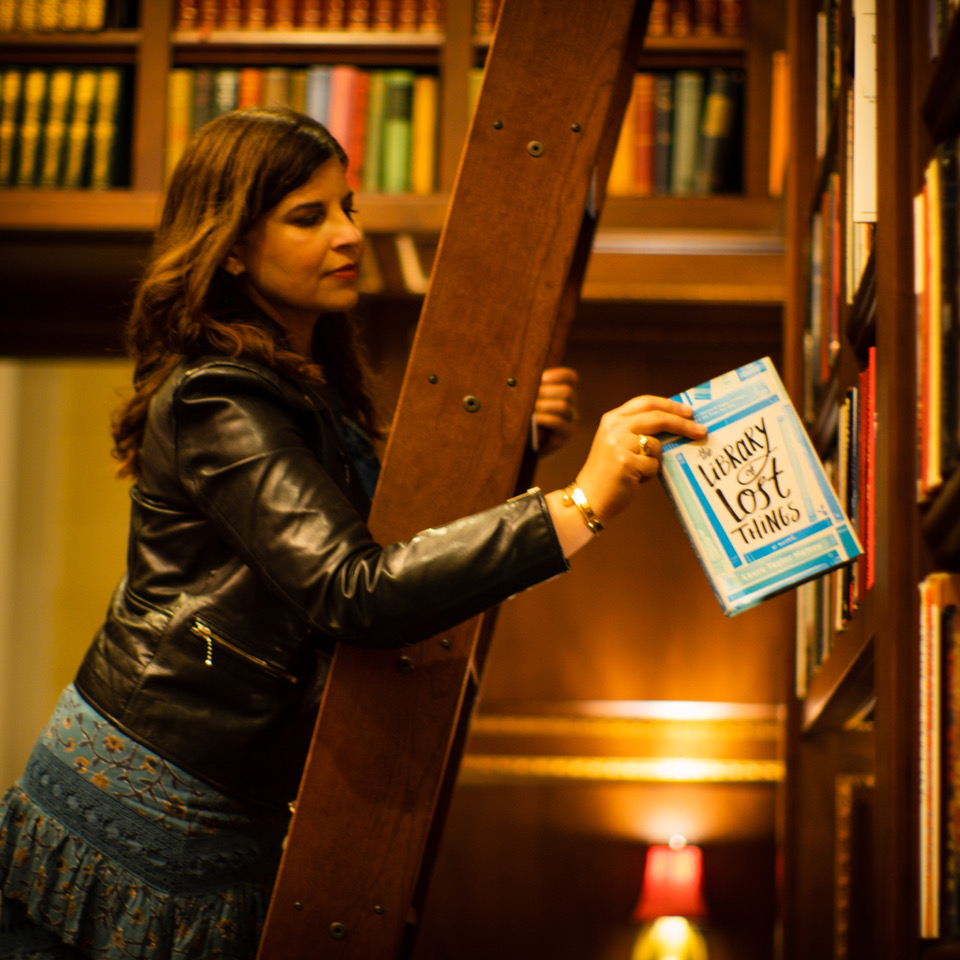 In what ways has your writing process and daily practice changed since writing your debut novel, The Library of Lost Things?
In what ways has your writing process and daily practice changed since writing your debut novel, The Library of Lost Things?
Now that my children are older, I definitely have more time to work in longer chunks, but my workload has increased ten-fold. I think what has changed the most is having to adapt to various seasons. My day looks much different when I’m actively drafting to other times when I’m focusing mainly on promotion or editing. My new motto is a combination of a day-by-day mentality as well as completing new tasks as quickly as I can, so they don’t pile up.
What was the spark for your latest novel, When We Were Them, and what made you want to explore female friendship?
After writing two coming of age YA novels with heavy romance subplots, I wanted to stretch my wings a little and try something different. WHEN WE WERE THEM is my most complex work to date, but I felt ready for a challenge. Having a brilliant editor who knew how to push and bring out my best made all the difference.
While A Cuban Girl’s Guide to Tea and Tomorrow is a tribute to my Cuban family, WHEN WE WERE THEM is an ode to my California beach girl childhood. I set the novel in the small community where I grew up. As a teen, my female friends and those relationships were so crucial to my identity and development. I wanted to celebrate a ride or die friendship between three teen girls, but also explore the way grief and loss and growing up can affect relationship, as well as the fallout that ensues when one girl leans too hard on the others. The novel asks the question, is everything they were strong enough to survive everything they’ve become?
While all of WWWT comes from you, which specific parts of which characters are most like or drawn from your family and friendships (childhood and/or current)?
These three characters and their friendship contain bits of me, in contrast to the character of Lila Reyes from A Cuban Girl’s Guide to Tea and Tomorrow. She embodies most me as a teen. Future opera star Britton shares my love of music, and Luz’s obsession with the heart and the human body and medicine is a tribute to my father who passed away from heart disease. Willa’s surfer girl and ocean loving spirit comes right from my childhood. I grew up on the beach featured on the cover.
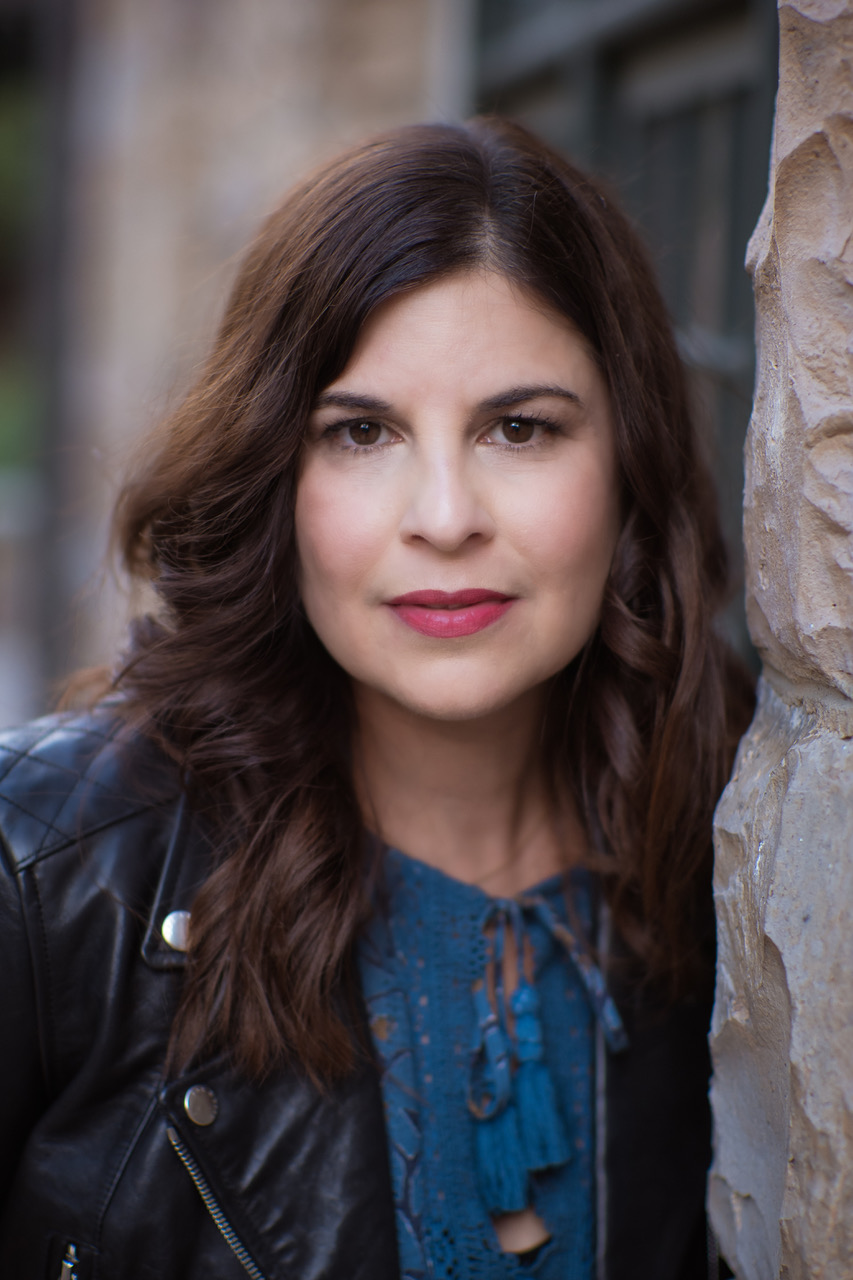 You dive deep into the ocean (pun intended), medicine, opera, becoming a Navy SEAL, and so much more in your novel. What did you know about each of these ahead of time, and what kind of research did you have to do before/while writing WWWT?
You dive deep into the ocean (pun intended), medicine, opera, becoming a Navy SEAL, and so much more in your novel. What did you know about each of these ahead of time, and what kind of research did you have to do before/while writing WWWT?
I knew very little about each of these aspects of my book, beyond surface level, before I started researching. Growing up in San Diego, I was familiar with Navy SEALs, used to live next door to a former SEAL. But it took interviews with active military personnel and a lot of reading to educate myself well enough to be able to include this experience in my story. The rest just took time and study, and a lot of YouTube watching. I particularly enjoyed watching hours of opera masterclasses and teaching sessions filmed at universities. Opera is such a gorgeous art form and it was a privilege to include a bit of this rep in my story.
You seem to be a master of juggling book drafting and revision as well as book promotion. What’s your typical schedule (or secret)?
Thank you! When I’m in a drafting or promotion season, or lately, both at once, I work between eight and ten hours a day. I draft in short 45-minute increments, spending the last fifteen minutes of every hour answering emails, prepping material for workshops, or maintaining my social media accounts. After dinner, I’m usually reading or working on my critique partners’ work. I’ve tried to be better about taking weekends off, but the month before a new book comes out, I typically have to spend a few weekend hours catching up. Despite the long hours, there is nothing I’d rather be doing.
Anyone who knows you knows how connected you are to your two critique partners. How has that relationship evolved and grown as you’ve all moved from pre-published writers to agented and/or published authors?
Now that the three of us have worked on multiple projects over the last three and a half years, I feel we’re better equipped to provide support, developmental feedback, and pinpoint editing within our workspace. We are the best of friends and mutual cheerleaders, and we trust each other implicitly. I am so lucky to have them.
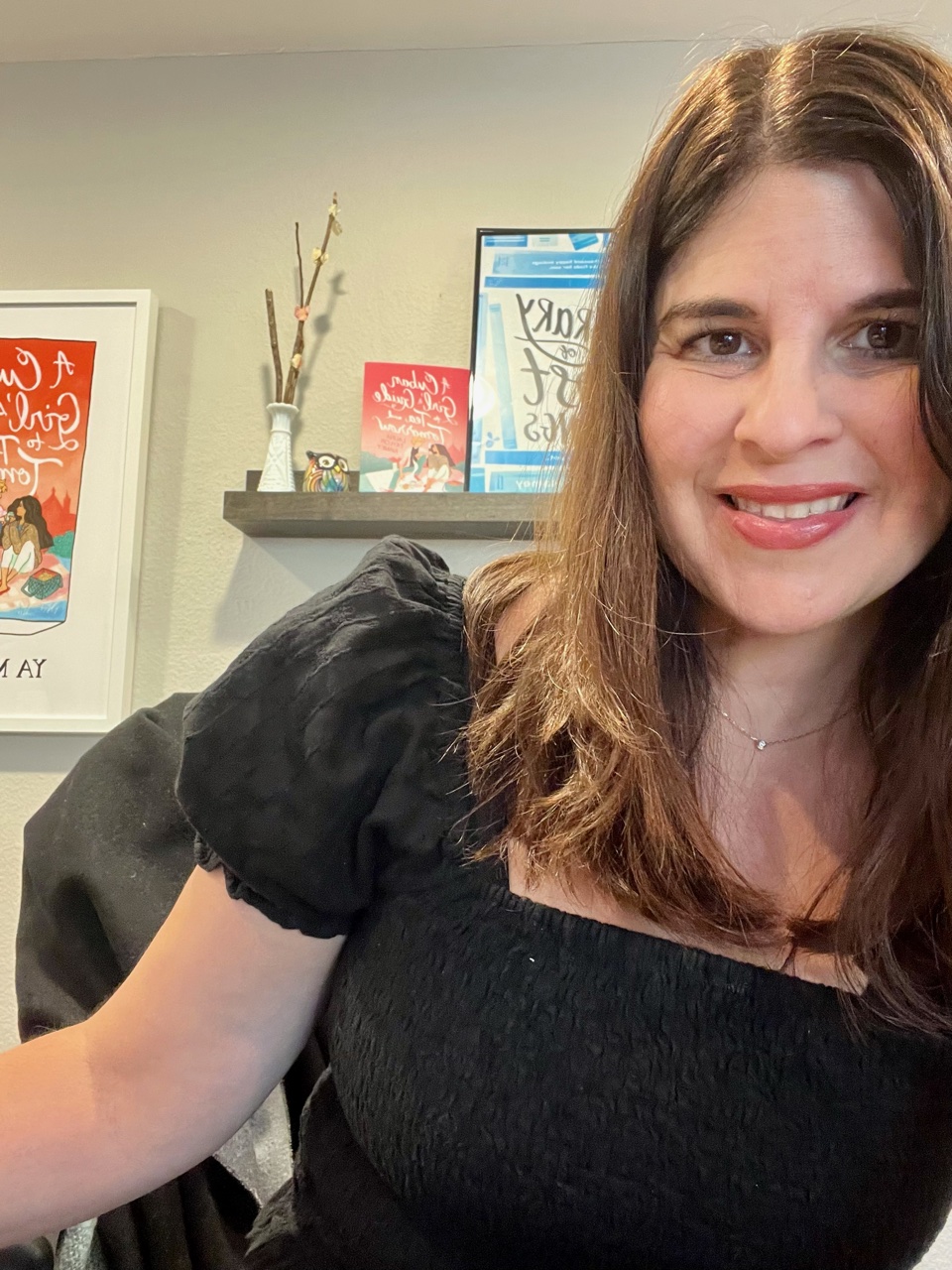 What was the best part about having your sophomore novel, A Cuban Girl’s Guide to Tea and Tomorrow, become a Reese’s YA Book Club pick—and a New York Times bestseller?
What was the best part about having your sophomore novel, A Cuban Girl’s Guide to Tea and Tomorrow, become a Reese’s YA Book Club pick—and a New York Times bestseller?
Being chosen for Reese’s Book Club has truly been one of the highlights of my career. The entire team is wonderful and so supportive, and the club works like a big family. I love being able to share my book across a wider platform and audience.
What has been the most challenging aspect of publishing three books in two years? And what have you learned about yourself as a writer (and a person) during that time?
Having to juggle multiple projects at once has been hard. Setting aside a draft to work on another book that might be in a different stage can be tricky. Now, I’m used to it. I’ve learned that I have a unique process that works for me and my writing style. And I’ve learned how much I truly love this job. The work is hard and long and taxing at times, but it is the only work I want to be doing.
What are some tips you have for aspiring writers to help them find ideas/inspiration for stories they’re meant to tell?
The world and the people you meet simply by living your life can provide so much inspiration. I’m also a fan of combining story ideas. The memory of a high school friend, plus a sparkling event three years ago, plus a curious letter or single line overheard at a café can be combined to create a thrilling new story. Also, ideas breed other ideas if you give them space. Jotting notes about story tidbits can unleash your creativity and many times, your mind will expand the scope of a few loose ideas into a novel worthy premise and a compelling tale.
Please share a favorite prompt or two for writers to help them get started on a new idea, or to get to know their characters better (especially those like me who are doing Nanowrimo in November).
My favorite exercise to get to know my character better is a long check list that I fiddle with before I start my book. Here is an abridged version. You should be able to answer these questions in your character’s voice.
I want most to:
I could have that except:
I am thrilled by:
I am inspired by:
I am terrified by:
I am disgusted by:
I’m most centered when:
I’m most anxious when:
My personal style looks like:
Not counting my pets, or family members, if I could only save three objects in a fire, I’d choose:
What are some of your favorite recent reads, TV shows, films or songs/albums?
Some recent favorite reads are You’d Be Home Now by Kathleen Glasgow, People We Meet on Vacation by Emily Henry, and Our Way Back to Always by Nina Moreno.
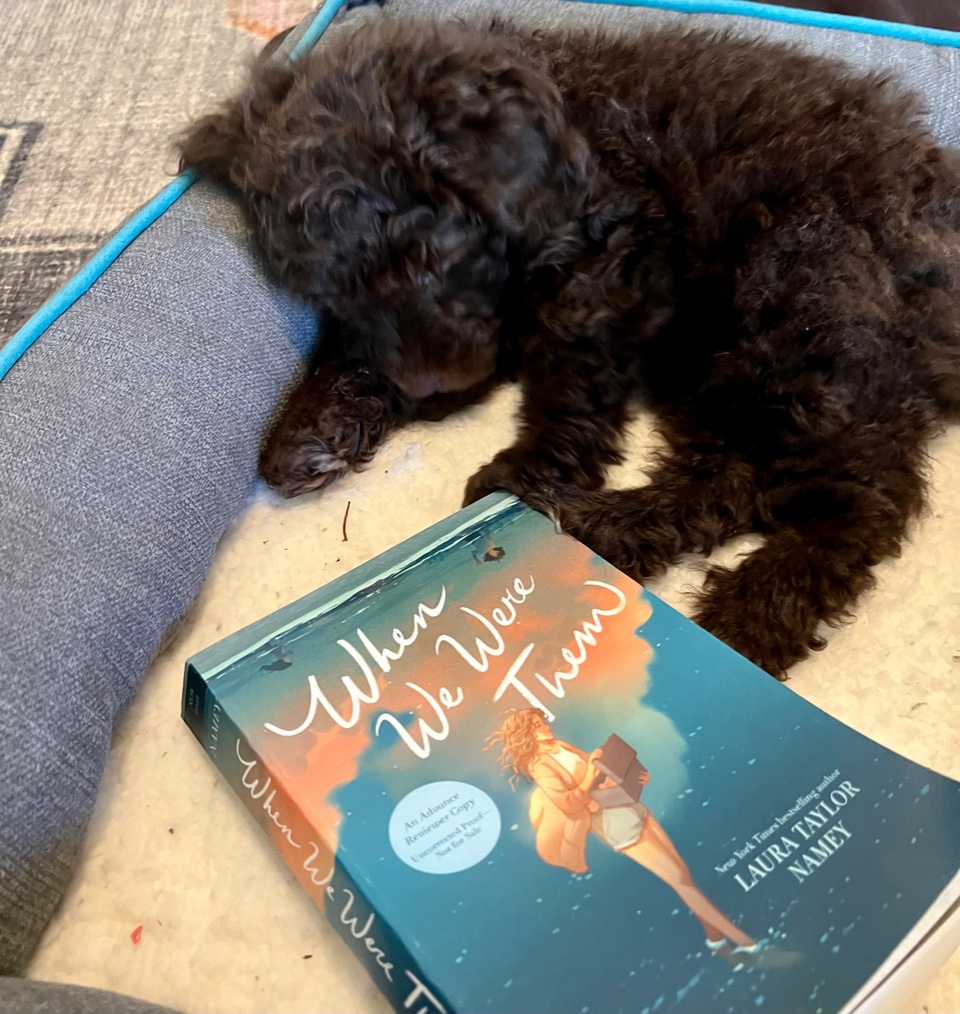
Professor Henry Higgins (aka Henry) is a big fan of his mother’s new novel!
Laura Taylor Namey is the New York Times bestselling author of Reese’s Book Club pick A Cuban Girl’s Guide to Tea and Tomorrow, The Library of Lost Things, and When We Were Them. A proud Cuban-American, she can be found hunting for vintage treasures and wishing she was in London or Paris. She lives in San Diego with her husband and two children. To learn more about Taylor Namey and all her work, visit her website here. You can order her books wherever books are sold, and check out her preorder campaign with Mysterious Galaxy Books in San Diego here.
by Elisa Zied | Sep 12, 2021 | books, fiction, writer, writers
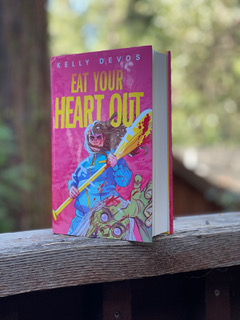 I’ve been following author Kelly DeVos’s career and enjoying her work and social media posts for years. I even had the pleasure of meeting the young adult writer at a pre-pandemic SCBWI conference in Los Angeles. Her latest novel, Eat Your Heart Out (Razorbill, June 2021), is smart, funny, satirical and original. Here’s a description of the novel, an Amazon Editor’s Pick in the Best Young Adult category:
I’ve been following author Kelly DeVos’s career and enjoying her work and social media posts for years. I even had the pleasure of meeting the young adult writer at a pre-pandemic SCBWI conference in Los Angeles. Her latest novel, Eat Your Heart Out (Razorbill, June 2021), is smart, funny, satirical and original. Here’s a description of the novel, an Amazon Editor’s Pick in the Best Young Adult category:
Eat Your Heart Out follows a group of six teenagers who are disgruntled at the prospect of being shipped off to a fancy fat camp during winter break. When they arrive at camp, they discover things are worse than they thought. The place is crawling with zombies. They may be the only six survivors and they have to both escape and figure out what’s really up with the mysterious pharmaceutical company running the camp.
I am thrilled to share this Q & A with deVos to celebrate her new novel as well as her timely and important work on body positivity, fat positivity and fat representation.
Your debut novel, Fat Girl on a Plane (Harlequin Teen, 2018), was written after an incident you experienced when you were about to board a flight. What happened, and how did it evolve into a young adult book?
Yes! I got the idea to write the book after I was asked to buy a second seat on a flight to Salt Lake City. Right around that time, I was contemplating giving my dream of becoming a published author another shot but I also happened to be working on setting up a photoshoot with Project Runway Season Four contestant, Keith Bryce. After leaving the show, Keith went on to set up a successful photography and wardrobe studio and I was headed there for a shoot.
I arrived at the Phoenix airport for my flight to Utah. The opening scene in my book was inspired pretty directly by what actually happened to me. I was told that I’d need to purchase a second seat. A lot of panicked questions raced through my mind. Could I afford the second seat? Did they even have one available? But most of all: Should I even go on the trip? For a moment, I couldn’t help but think that it would be less trouble and less humiliating to just stay home. I reminded myself that I had done a ton of work behind the scenes to make this shoot happen and I had as much right as anyone to be there. So, I got on the plane. But that experience was the genesis of my book. I kept wondering. Does fatphobia make us feel like we’re unworthy of pursuing our own dreams? I wanted to write not only about the way fat people are treated but also about how those negative experiences impact the choices that we make.
What inspired your subsequent novels (which include the duology Day Zero and Day One as well as Eat Your Heart Out)? How did your writing processes differ for each of these (and/or compared to your debut)?
After FAT GIRL came out, I was supposed to be working on another YA contemporary book, but I was having a lot of trouble. The 2016 election was in full swing. My awareness of a lot of issues had changed and, for me, the social and political climate, didn’t put me in a place where I was able to focus on upbeat writing. I wanted to change what I was doing. As I was changing to writing thrillers, I found I really liked that process quite a lot and I wanted to go more in that direction. I’ve always loved horror movies so I decided to lean into that genre and write EAT YOUR HEART OUT, which was such a blast to work on.
What is it about summer camp that made you want to write about it? What do you most remember about those days, and how did those experienced impact you as a person and a writer?
When I was growing up, we didn’t have a lot of money and I only got to go to summer camp once, but it was honestly the best experience ever. As a child, I was really scared of spiders. I still don’t like them now, but at that time I was absolutely terrified. The camp I went to had these pretty basic, VERY rustic, wooden cabins where six or eight kids could sleep on bunkbeds. The very first night I found an enormous spider in my bed and almost got hysterical.
They moved me into the cabins that they had for adults which were (to a ten-year-old) super luxurious. There was a private pool and a kitchen with free snacks and a queen size bed and air conditioning. It was fabulous. The other kids thought I was some kind of celebrity or something. I’d be out at camp during the day, doing arts and crafts and sitting by the campfire and then I’d go back to the fancy part and swim and snatch Oreos. I took a lot of inspiration from that experience into EAT YOUR HEART OUT. It was a camp setting for people who almost wanted to pretend to be camping rather than actually be roughing it.
You’ve written thoughtfully about body positivity in several publications, most notably The New York Times (May 2018). How has your thinking about it evolved since writing that article? And how does this translate into the messages you share (without being didactic of course) through your novels?
Body positivity, fat positivity and fat representation are all topics that are very near and dear to my heart. I continue to feel that there should be space for nuance in how we handle these issues, particularly in fiction. But I feel like what I have had to learn is that, as fat people, we’re not all in the same place in our journey to self-acceptance and self-love. So, I have tried to proceed with a lot more sensitivity to try to make sure that my material finds an audience who’s able to and interested in engaging with it. Using content warnings, describing the plot of my books very accurately and making sure that books that contain fatphobia (even just to condemn it) are marketed to prepared readers are things that I’ve gotten much more serious about.
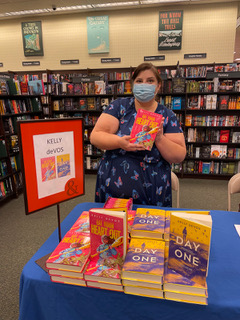 How has the pandemic impacted your writing, and how do you balance that with book promotion?
How has the pandemic impacted your writing, and how do you balance that with book promotion?
Possibly because I have been writing horror, I actually got quite a bit of writing done. Feelings of mortal terror have been coming quite naturally! During the pandemic, I’ve struggled with what, if anything, I could do to effectively promote my books. Many of the things I would have done in the past, like bookstore or library events, haven’t been paused due to COVID. In terms of balance, I try to prioritize writing. Beyond that, for promotion, I try to focus on things I enjoy. I mainly stay on social media channels I like and do things that are fun. That way, I am always satisfied with the use of my time.
What has been the best part of writing for young people?
Reading was so important to me growing up and I love the idea that my books are available for teen readers. I think the best part is getting to see my books find their way into the hands of teens and hope that they impact the readers’ lives in some way.
Any writing resources (books, podcasts, etc.) that you can’t live without?
I love Outlining Your Novel and the workbook that goes with it from K.W. Weiland. She also has a fantastic website (https://www.helpingwritersbecomeauthors.com) full of a ton of free resources for writers. For podcasts, I listen to What Book Hooked You with Brock Shelley which I find fascinating because authors talk about the books that inspired them to write. I also really like Writer Writer Pants on Fire with Mindy McGinnis. I’m a big fan of her work and I think she often has really interesting topics and guests.
Please share any advice that has helped you in your journey from writer to published author.
A couple things have really helped me. First of all, I’ve made some great friends who are writers and who really understand what the process is like. From being in the query trenches to finally have a book on shelves, it helps so much to have a support system. Second, I try to keep moving forward. I keep a couple of projects going at the same time and I try to do things to improve my craft.
I have one last question that’s completely tangential to book talk. I learned on your website that you have a sticker collection! One of the things I personally loved about sleep away/overnight camp was sharing with others and organizing my sticker and stationary collections. What are your tips for those (including me) who might want to revisit/reintroduce the popular pastime into our lives?
I basically live for stickers!! Just kidding. But I do like them an awful lot. Growing up, I absolutely loved all that Lisa Frank stuff. A few years ago, I saw an ad online for a sticker club and it dawned on me that I could collect stickers now too. Whenever I travel anywhere I pick up stickers and there are some local boutiques here in Phoenix that have incredible offerings. I was a member of the Pipsticks club for a while but I had to pause that a bit because I was running out of places to store my stuff.
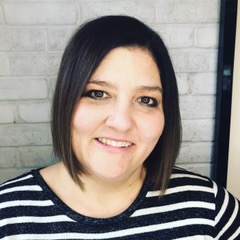 Kelly deVos is from Gilbert, Arizona, where she lives with her high school sweetheart husband, amazing teen daughter and superhero dog, Cocoa. She holds a B.A. in Creative Writing from Arizona State University. When not reading or writing, Kelly can typically be found with a mocha in hand, bingeing the latest TV shows and adding to her ever-growing sticker collection.
Kelly deVos is from Gilbert, Arizona, where she lives with her high school sweetheart husband, amazing teen daughter and superhero dog, Cocoa. She holds a B.A. in Creative Writing from Arizona State University. When not reading or writing, Kelly can typically be found with a mocha in hand, bingeing the latest TV shows and adding to her ever-growing sticker collection.
Her work has been featured in the New York Times as well as on Vulture, Salon, Bustle and SheKnows. Her debut novel, Fat Girl on a Plane, was named one of the “50 Best Summer Reads of All Time” by Reader’s Digest magazine.
Learn more about deVos on her website. You can also follow her on Twitter, on Instagram, and on Facebook. You can also learn more about her work on Goodreads. You can purchase Eat Your Heart Out from Amazon, B&N, Indiebound or wherever books are sold.
by Elisa Zied | Sep 15, 2019 | books, fiction, writer, writers, writing, young adult books
Laura Taylor Namey is a woman on a mission. This dog loving, piano playing, former teacher is a mother of two and full time writer. She aspires to live in London someday, but right now is truly living the dream (and working her a** off) as the debut author of the brand new young adult novel, The Library of Lost Things (Inkyard Press, October 2019). Here’s a description of the novel from Goodreads:
From the moment she first learned to read, literary genius Darcy Wells has spent most of her time living in the worlds of her books. There, she can avoid the crushing reality of her mother’s hoarding and pretend her life is simply ordinary. But when a new property manager becomes more active in the upkeep of their apartment complex, the only home Darcy has ever known outside of her books suddenly hangs in the balance.
While Darcy is struggling to survive beneath the weight of her mother’s compulsive shopping, Asher Fleet, a former teen pilot with an unexpectedly shattered future, walks into the bookstore where she works…and straight into her heart. For the first time in her life, Darcy can’t seem to find the right words. Fairy tales are one thing, but real love makes her want to hide inside her carefully constructed ink-and-paper bomb shelter.
Still, after spending her whole life keeping people out, something about Asher makes Darcy want to open up. But securing her own happily-ever-after will mean she’ll need to stop hiding and start living her own truth—even if it’s messy.
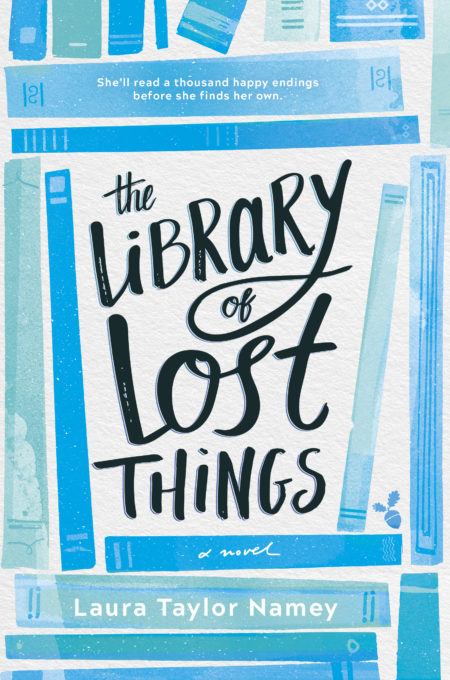 I had the pleasure of doing an email interview with my lovely friend whom I had the pleasure of meeting several years ago at a Society for Children’s Book Authors and Illustrators annual conference. Read on to learn about her writing journey and why she loves #pitchwars and her critique partners (not necessarily in that order).
I had the pleasure of doing an email interview with my lovely friend whom I had the pleasure of meeting several years ago at a Society for Children’s Book Authors and Illustrators annual conference. Read on to learn about her writing journey and why she loves #pitchwars and her critique partners (not necessarily in that order).
EZ: At what point in your life did you know you wanted to write for children and young adults? And when did you know you were a writer?
LTN: I have always felt like a natural writer, even if I didn’t have the logistics figured out until a few years ago. I am a former teacher, and I found myself using a lot of literature in my classroom lessons. I began to long for the chance to write my own stories. About five years ago, I started writing a young adult novel (this one will forever live in a drawer). I’d had no formal training, but I used that work to find out what I really did need to work on more. I got help, read a ton, and decided that I wanted to focus on the young adult age group. I love the emphasis on coming-of-age themes, high-concept storytelling, and exploring complex and relevant topics.
EZ: What has been the best part of transitioning from a pre-published to a published author?
LTN: I have such admiration and respect for career authors, and creators who consistently come up with beautiful and compelling content. Being able to take my small place beside them, with the word Published next to my name, is an incredible experience.
EZ: How do you fit writing into the rest of your life (and fit the rest of your life into your writing)?
LTN: I am blessed to have a supportive family, and the opportunity to write full time right now. I work best in the morning, so having a new teen driver in my home has helped to free up some of my time to build up my word count before lunch time. I take breaks to take care of my home and family, and to squeeze in a workout. Admittedly, I don’t watch a lot of TV. I am usually writing, or reading during down time.
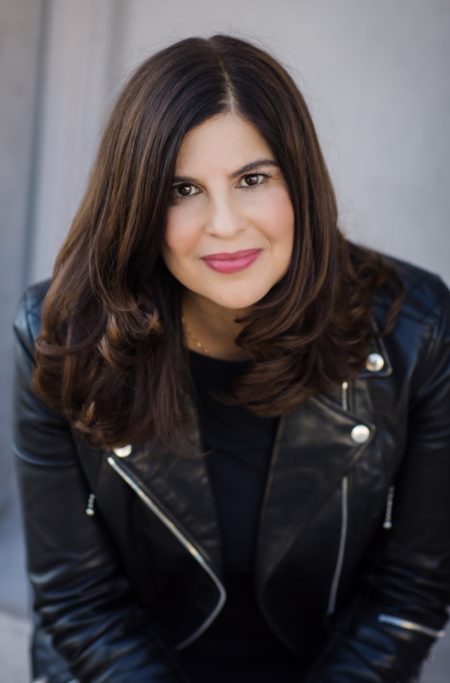 EZ: What are your favorite kinds of books to read, and how do they inspire your writing?
EZ: What are your favorite kinds of books to read, and how do they inspire your writing?
LTN: I love books that stick with me long after I’ve finished them. I enjoy a wide variety of authors, age groups, and genres. Make me care, feel, and want to chat about your book all day and that’s my idea of a winner. I believe all writers need to actively read other writers. I am most inspired by other authors in the areas of scope and opportunity. There are so many ways to attack and deconstruct even the same topic in drastically different ways with differing points of view. Reading more only confirms my belief that so many possibilities lay in front of our pens.
EZ: Can you describe your experience with #pitchwars on Twitter?
LTN: I was a 2017 #pitchwars unofficial mentee. Besides working with a fantastic mentor who became the first person to work on THE LIBRARY OF LOST THINGS, #pitchwars brought me into a supportive community of writers. This is the real prize in any online contest. Put your work out there. Meet fellow writers. Team up and share and hone your craft together, and know that you are not alone in your struggles and hopes.
EZ: You are a big fan of your critique partners. How did you meet them, and what makes your partnership work? What advice do you have for other writers who want to work with critique partners or groups?
LTN: I have two fantastic critique partners that work with me almost every day. We met because we were all 2017 #pitchwars unofficial mentees. We began chatting privately on Twitter DM, and became lifelong friends through sharing our work and supporting one another. What sets our group apart is that we don’t wait until we finish a novel to edit or weigh in. We are always working together on our three individual manuscripts. We plan together from idea-up, talk through issues, name towns or characters, and share snippets of our writing as we go. When I get stuck, I can ask a question directly from the point of concern. My partners already have such a deep knowledge of my manuscript, plot and theme, and character arcs, that they can weigh in quickly. And I do the same for their work.
For those who would like to join or form a group like this, hang out on private writer’s boards or the community groups associated with social media programs, such as #pitchwars. Put yourself out there. It might take some time, but you will find your people. It’s okay if you try out a CP and that person isn’t quite right for you. Keep sharing and investing in others.
How will you know if you are collaborating with the best people for you? Your perfect CPs will be similar enough to you and your work that they share a taste level and basic skill level. But they should be different enough that they can expand your scope and contribute to your growth. A good CP walks beside you, while also possessing the tools to push you. My CPs and I are the best of friends, but when it’s time to work, we give tough feedback with love.
EZ: What are you currently working on? And where do you see yourself in five years?
LTN: Right now I am almost finished with the draft of a secret junior novel. I’m hanging out in the young adult contemporary world for a while, and hope to have a few books side-by-side on shelves in five years.
To learn more about Laura Taylor Namey and The Library of Lost Things, visit her website. You can also find her on Twitter and on Instagram. Stay tuned for Namey’s sophomore novel, A Cuban Girl’s Guide to Sweaters and Stars (Simon & Schuster, Fall ’20) and future titles as well!
by Elisa Zied | May 11, 2019 | books, fiction
The Art of Breaking Things (Viking Books for Young Readers, June 2019) by debut author Laura Sibson tells the story of 17-year-old Skye, an artist set to leave her small town and attend art school once she figures out how to survive senior year and confront the trauma she experienced several years earlier. Here’s a brief description of the novel from Sibson’s website:
Weekends are for partying with friends while trying to survive the mindnumbingness that is high school. The countdown to graduation is on, and Skye has her sights set on escaping to art school and not looking back.
But her party-first-ask-questions-later lifestyle starts to crumble when her mom rekindles her romance with the man who betrayed Skye’s trust and boundaries when he was supposed to be protecting her. She was too young to understand what was happening at the time, but now she doesn’t know whether to run as far away from him as possible or give up her dreams to save her little sister. The only problem is that no one knows what he did to her. How can she reveal the secret she’s guarded for so long?
With the help of her best friend and the only boy she’s ever trusted, Skye might just find the courage she needs to let her art speak for her when she’s out of words. After years of hiding her past, she must become her own best ally.
(more…)
by Elisa Zied | Apr 27, 2019 | books, fiction, writers, young adult books
When I heard about J.B. Howard’s debut novel, When I Was Summer (Viking Books for Young Readers, April 30, 2019) and saw the absolutely gorgeous book cover, I began counting the days until it would be in my hands. Intrigued by the promise of music and mystery (maybe some mating too?!), I pre-ordered the novel and anxiously await its arrival. If it turns out to be anything at all like its author–because what work of fiction doesn’t include at least part of the soul from which it comes–I can’t imagine it’ll be anything less than awesome.
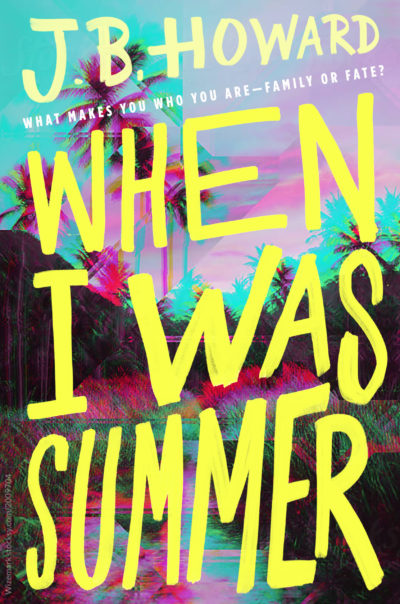 Here’s a description of When I Was Summer from the publisher:
Here’s a description of When I Was Summer from the publisher:
A relatable novel about unrequited love, rock ‘n’ roll, and what you find when you go searching for yourself.
Sixteen-year-old Nora Wakelin has always felt like an outsider in her own family. Her parents and older sister love her, but they don’t understand anything about her: not her passion for music, not her all-encompassing crush on her bandmate Daniel (who is very much unavailable), not her recklessness and impulsiveness. Nora has always imagined that her biological mother might somehow provide the answer as to why she feels like such an outsider.
(more…)
 In what ways has your writing process and daily practice changed since writing your debut novel, The Library of Lost Things?
In what ways has your writing process and daily practice changed since writing your debut novel, The Library of Lost Things? You dive deep into the ocean (pun intended), medicine, opera, becoming a Navy SEAL, and so much more in your novel. What did you know about each of these ahead of time, and what kind of research did you have to do before/while writing WWWT?
You dive deep into the ocean (pun intended), medicine, opera, becoming a Navy SEAL, and so much more in your novel. What did you know about each of these ahead of time, and what kind of research did you have to do before/while writing WWWT?  What was the best part about having your sophomore novel, A Cuban Girl’s Guide to Tea and Tomorrow, become a Reese’s YA Book Club pick—and a New York Times bestseller?
What was the best part about having your sophomore novel, A Cuban Girl’s Guide to Tea and Tomorrow, become a Reese’s YA Book Club pick—and a New York Times bestseller?
 I’ve been following author Kelly DeVos’s career and enjoying her work and social media posts for years. I even had the pleasure of meeting the young adult writer at a pre-pandemic
I’ve been following author Kelly DeVos’s career and enjoying her work and social media posts for years. I even had the pleasure of meeting the young adult writer at a pre-pandemic  How has the pandemic impacted your writing, and how do you balance that with book promotion?
How has the pandemic impacted your writing, and how do you balance that with book promotion?  Kelly deVos is from Gilbert, Arizona, where she lives with her high school sweetheart husband, amazing teen daughter and superhero dog, Cocoa. She holds a B.A. in Creative Writing from Arizona State University. When not reading or writing, Kelly can typically be found with a mocha in hand, bingeing the latest TV shows and adding to her ever-growing sticker collection.
Kelly deVos is from Gilbert, Arizona, where she lives with her high school sweetheart husband, amazing teen daughter and superhero dog, Cocoa. She holds a B.A. in Creative Writing from Arizona State University. When not reading or writing, Kelly can typically be found with a mocha in hand, bingeing the latest TV shows and adding to her ever-growing sticker collection. I had the pleasure of doing an email interview with my lovely friend whom I had the pleasure of meeting several years ago at a
I had the pleasure of doing an email interview with my lovely friend whom I had the pleasure of meeting several years ago at a  EZ: What are your favorite kinds of books to read, and how do they inspire your writing?
EZ: What are your favorite kinds of books to read, and how do they inspire your writing? Here’s a description of When I Was Summer from
Here’s a description of When I Was Summer from
Recent Comments